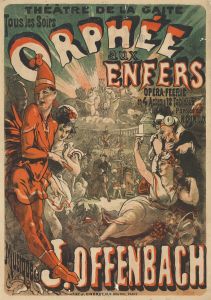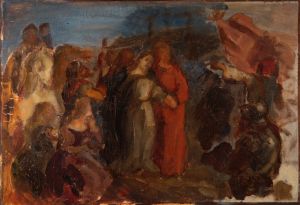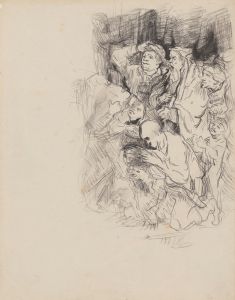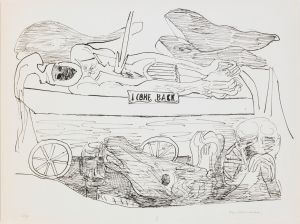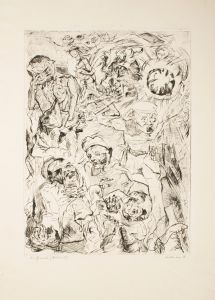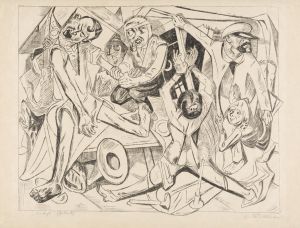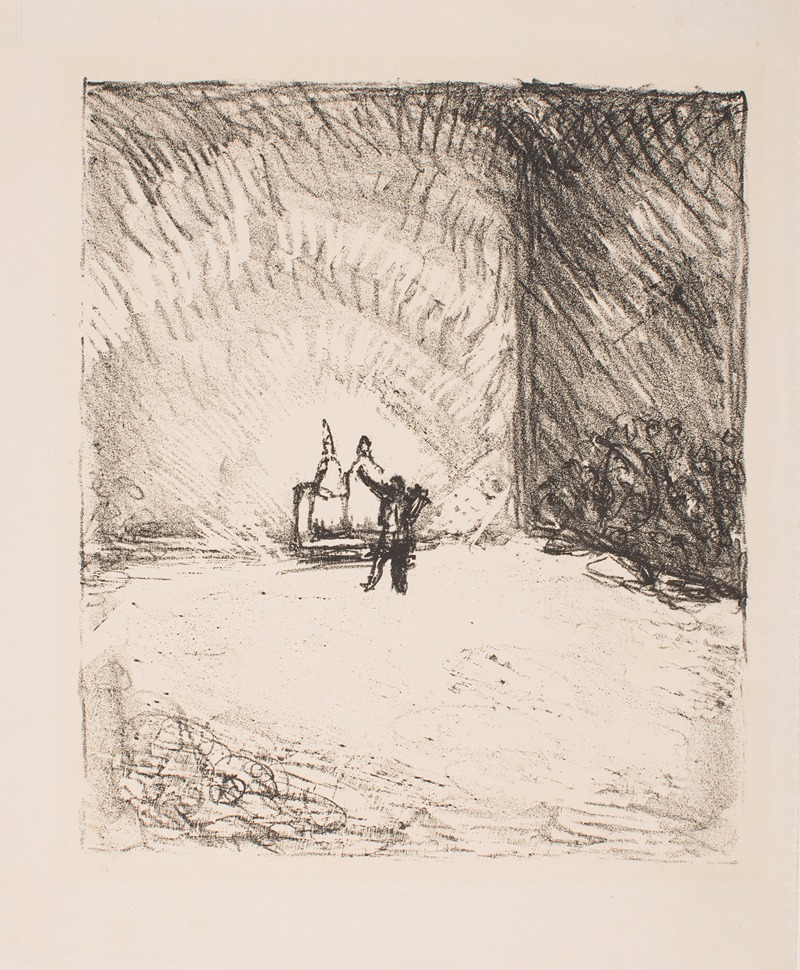
Orpheus before Pluto and Proserpina
A hand-painted replica of Max Beckmann’s masterpiece Orpheus before Pluto and Proserpina, meticulously crafted by professional artists to capture the true essence of the original. Each piece is created with museum-quality canvas and rare mineral pigments, carefully painted by experienced artists with delicate brushstrokes and rich, layered colors to perfectly recreate the texture of the original artwork. Unlike machine-printed reproductions, this hand-painted version brings the painting to life, infused with the artist’s emotions and skill in every stroke. Whether for personal collection or home decoration, it instantly elevates the artistic atmosphere of any space.
Max Beckmann's painting Orpheus before Pluto and Proserpina is a work by the renowned German artist, created in 1944 during a period of significant personal and historical turmoil. Beckmann, known for his distinctive style that blends elements of Expressionism and New Objectivity, often drew upon mythological and allegorical themes in his art, and this painting is no exception. The work depicts the mythological figure Orpheus, a legendary musician and poet from Greek mythology, standing before Pluto (Hades), the god of the underworld, and Proserpina (Persephone), his queen.
The painting is part of Beckmann's broader exploration of mythological subjects, which he used as a means to reflect on the human condition, existential struggles, and the complexities of life and death. In the myth of Orpheus, the protagonist descends into the underworld to plead for the return of his wife, Eurydice, who has died. Orpheus's music is said to have moved even the gods of the underworld, leading Pluto and Proserpina to grant him permission to bring Eurydice back to the world of the living, albeit under strict conditions.
Beckmann's interpretation of this myth is marked by his characteristic use of bold lines, dramatic contrasts, and a compressed, almost claustrophobic composition. The figures of Orpheus, Pluto, and Proserpina are rendered in a way that emphasizes their emotional intensity and the tension of the scene. Beckmann's work often reflects his personal experiences and the broader socio-political context of his time, and this painting, created during World War II, may carry undertones of the artist's reflections on suffering, loss, and the possibility of redemption.
The painting is notable for its symbolic depth and the way it integrates Beckmann's modernist sensibilities with classical themes. It exemplifies his ability to reinterpret ancient myths in a way that resonates with contemporary audiences. As with many of Beckmann's works, Orpheus before Pluto and Proserpina invites viewers to engage with its layered meanings and to consider the enduring relevance of mythological narratives.
The painting is held in a private collection, and its exact provenance and exhibition history are not widely documented. Beckmann's works, including this one, continue to be studied and celebrated for their profound impact on 20th-century art and their ability to bridge the personal and the universal through the lens of myth and allegory.








